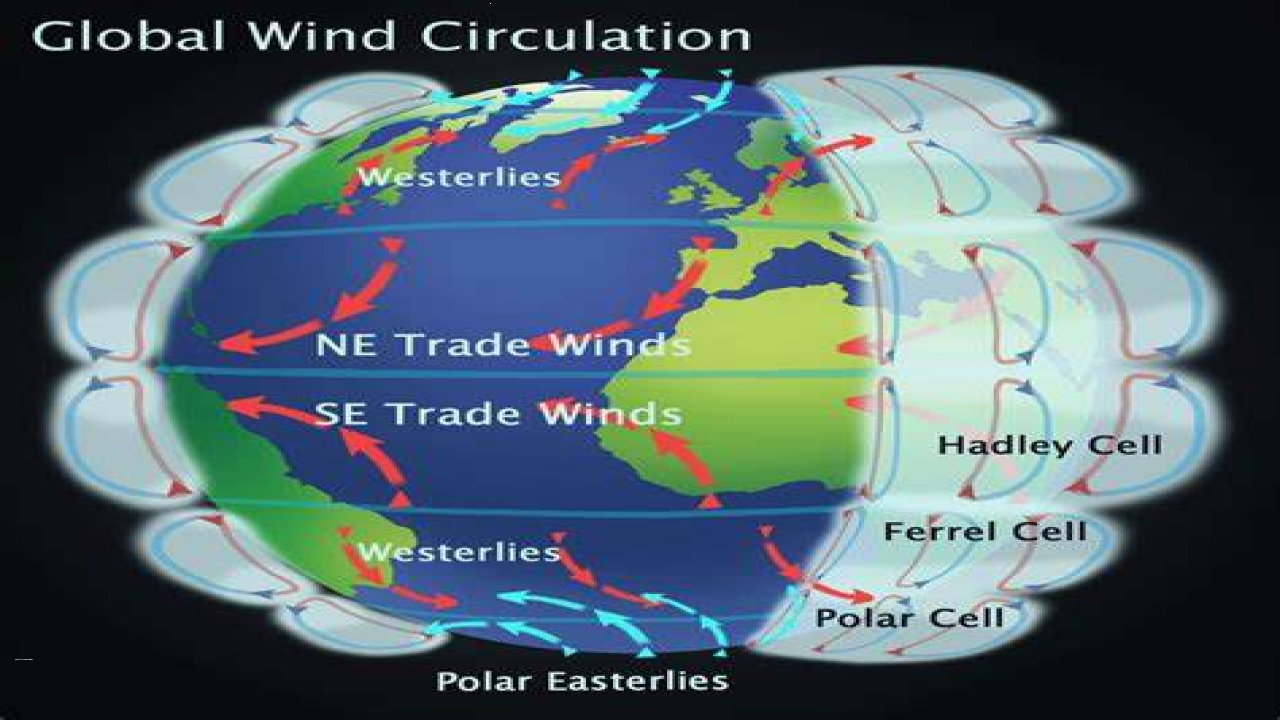Planetary and local winds
Planetary and local winds are the movement of air in the Earth’s atmosphere that are driven by differences in temperature and pressure. These winds play a critical role in regulating weather patterns and climate conditions across the planet.
What are Planetary and Local Winds?
Planetary winds refer to the large-scale patterns of air movement in the Earth’s atmosphere that are driven by differences in temperature and pressure. These winds include the trade winds, westerlies, and polar easterlies, and are influenced by the rotation of the Earth.
Local winds, on the other hand, refer to the smaller-scale patterns of air movement that are driven by local temperature and pressure differences. These winds include sea breezes, land breezes, and mountain and valley breezes.
Factors that Influence Planetary and Local Winds
Planetary and local winds are influenced by a range of factors, including:
- Solar Radiation: The amount of solar radiation that the Earth receives varies with latitude, creating differences in temperature and pressure that drive atmospheric circulation.
- Earth’s Rotation: The Earth’s rotation creates a Coriolis effect, which causes air to deflect to the right in the northern hemisphere and to the left in the southern hemisphere. This effect influences the direction of atmospheric circulation.
- Land and Ocean Surfaces: Land and ocean surfaces have different albedos, or reflectivities, which affect the amount of solar radiation that is absorbed and reflected. This can influence the distribution of heat energy and the movement of air masses.
- Topography: Mountain ranges and other topographic features can influence atmospheric circulation by blocking the movement of air masses and creating areas of high and low pressure.
Planetary Winds
The three main types of planetary winds are:
- Trade Winds: The trade winds are located near the equator and are characterized by warm, moist air rising and forming clouds and precipitation. The cool, dry air that descends from the top of the cell creates stable atmospheric conditions and suppresses cloud formation and rainfall in the subtropical regions.
- Westerlies: The westerlies are located in the mid-latitudes and are characterized by a strong, steady flow of air from west to east. These winds are responsible for much of the weather patterns in North America and Europe.
- Polar Easterlies: The polar easterlies are located near the poles and are characterized by cold, dense air sinking and flowing towards the equator. These winds are responsible for the formation of polar ice caps and the movement of cold air masses across the planet.
Local Winds
Local winds are driven by differences in temperature and pressure on a smaller scale than planetary winds. Some examples of local winds include:
- Sea Breeze: A sea breeze occurs when cool air from over the ocean flows towards land, replacing warmer air that rises and flows towards the ocean. This can create a cool, refreshing breeze in coastal regions.
- Land Breeze: A land breeze occurs at night when cool air from over land flows towards the warmer air over the ocean. This can create a cool, dry breeze in coastal regions.
- Mountain and Valley Breezes: Mountain and valley breezes occur when cool air from higher elevations flows down into valleys, while warm air from valleys flows up to higher elevations. These breezes can create distinctive weather patterns in mountainous regions.
The Importance of Planetary and Local Winds
Planetary and local winds play a critical role in regulating weather patterns and climate conditions across the planet. By distributing heat energy and moisture across the Earth’s surface, atmospheric circulation influences the formation of weather pattern and the distribution of precipitation. For example, the trade winds are responsible for bringing moisture to the tropical rainforests, while the westerlies are responsible for bringing moisture to the grasslands of North America and Europe.
Local winds also have important effects on weather patterns and can influence the local climate. For example, sea breezes can cool coastal regions and provide relief from heat waves, while mountain and valley breezes can influence the formation of clouds and precipitation in mountainous regions.
Understanding the factors that influence planetary and local winds is important for predicting changes in weather patterns and developing strategies for mitigating the effects of severe weather events. By understanding the movement of air in the Earth’s atmosphere, scientists can work to develop strategies for promoting sustainable development and mitigating the effects of climate change.
Impacts of Planetary and Local Winds
Planetary and local winds can have significant impacts on weather patterns and climate conditions across the planet. For example, changes in the trade winds can lead to changes in rainfall patterns in the tropics, which can affect agricultural production and lead to droughts or floods.
Local winds can also have significant impacts on weather patterns. For example, sea breezes can affect the formation of thunderstorms and hurricanes, while mountain and valley breezes can influence the distribution of precipitation in mountainous regions.
Climate Change and Planetary and Local Winds
Climate change is expected to have significant impacts on planetary and local winds. As global temperatures continue to rise, it is likely that the intensity and frequency of certain winds will change. For example, changes in the westerlies could lead to changes in the distribution of precipitation in North America and Europe.
Changes in local winds could also have significant impacts on weather patterns and climate conditions. For example, changes in sea breezes could affect the formation of hurricanes and tropical storms, while changes in mountain and valley breezes could affect the distribution of precipitation in mountainous regions.


